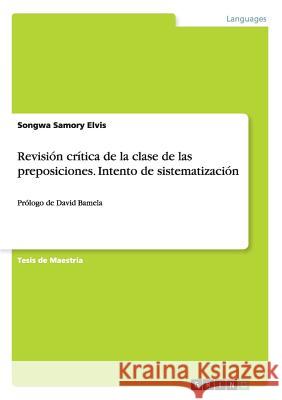Revisión crítica de la clase de las preposiciones. Intento de sistematización: Prólogo de David Bamela » książka
Revisión crítica de la clase de las preposiciones. Intento de sistematización: Prólogo de David Bamela
ISBN-13: 9783668110199 / Hiszpański / Miękka / 2015 / 146 str.
Revisión crítica de la clase de las preposiciones. Intento de sistematización: Prólogo de David Bamela
ISBN-13: 9783668110199 / Hiszpański / Miękka / 2015 / 146 str.
(netto: 363,85 VAT: 5%)
Najniższa cena z 30 dni: 358,11 zł
ok. 13-18 dni roboczych.
Darmowa dostawa!
Tesis de Maestria del ano 2012 en eltema Romanistica - Espanol, literatura, cultura general, Universite de Douala, Idioma: Espanol, Resumen: In this investigation, we study spanish prepositions and what is generally said about them. Before, prepositions were considered as a part of the class of conjunctions. Finally, Dionisio de Tracia was who made independents prepositions as a class of words. From then on, they became a subject of study. In their description, they have three mains characteristics: the preposition as connecting element, subordinator and transpositor element. The class of preposition is considered as a closed class. It has a number of elements relatively fixed; and sometimes, some of them are discussed. Studying the prepositions syntax, we draw the following conclusions: postponed prepositions don't exist; elements of different classes, not only substantives, can be term of preposition; the preposition by itself cannot be regent in any sequence; the sylleptic construction enriches the language, so that it shouldn't be reprimanded; the prepositional syntagm has some nucleus different from the one of the nominal syntagm. The subject function is incompatible with preposition; the grouped prepositions don't exist, but prepositional constructions can be introduced by other preposition; inseparable prepositions are simply prefix or suffix. We classified them into strong and weak. Into the weak ones, there are simple and complex forms. A veritable preposition should sum the following characteristics: be invariable, always goes before, be transpositor, free morpheme and not accentuated.











